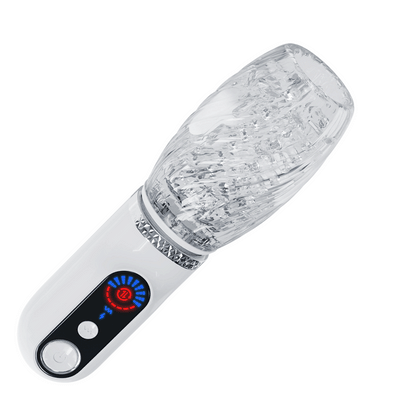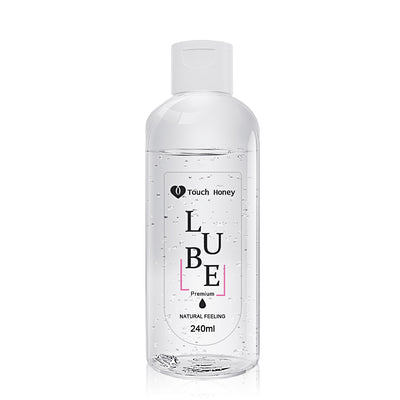Condom sizes and purchasing guide
Are you unsure about choosing the right condom or not entirely satisfied with the ones you've tried? Perhaps you're familiar only with the Durex brand and want to explore more options. This article is tailored just for you.
Here, you'll delve into a world of condom choices, and we'll address the most commonly asked questions. Before we dive in, it's essential to remember that condoms are the most widely used physical barrier contraceptive method for both men and women, boasting an effectiveness rate of over 97%.
Moreover, condoms stand out as the sole method capable of preventing the transmission of sexually transmitted diseases (STDs). Essentially, a condom is a latex or polyurethane sheath placed over the erect penis, serving as a barrier to prevent and contain ejaculation (semen).
1. What size condom should I use?
The most common query when purchasing condoms revolves around size. Recognizing that each penis varies in shape and size, there exist different condom sizes to accommodate this diversity.
Selecting the correct size is crucial:
- If too small: It can constrict uncomfortably, even leading to breakage, and diminish the quality of the erection.
- If too large: The condom might slip off during intercourse, rendering it ineffective.
- If you're uncertain about your exact size, continue reading, and we'll guide you on how to determine it. Contrary to a common misconception, the crucial factor in condom selection is not solely the length of the penis; instead, it's the width, considering that condoms are unrolled during use.
Condoms come in a range of widths/sizes, spanning from 45 mm, the tightest, to 72 mm. The most prevalent sizes fall within the 53 to 56 mm range. Understanding this spectrum is vital for choosing a condom that ensures comfort, effectiveness, and overall satisfaction.
2. How to measure the nominal width of the penis?
Determining the correct condom size relies on measuring the nominal width, a crucial factor in condom selection. Follow these steps to measure the perimeter of your erect penis:
- Wrap: Surround the half-base of your erect penis with a measuring tape, ensuring a snug fit, and measure the perimeter. The measurement obtained represents the circumference and is recorded in centimeters.
- Calculate: To find the nominal width, divide the obtained value by two. This calculation ensures an accurate understanding of the width needed for a comfortable and secure fit.
Example: You have measured the width of your penis and it has a perimeter of 11.6 cm.
So, we divide this measure by two:
11.6/2 = 5.8cm (i.e. 58mm)
Indeed, the calculated 5.8 centimeters represent the nominal width of your penis. For the convenience of condom selection, which typically uses millimeters, you would be looking for condoms with a nominal width of approximately 58 mm. It's a straightforward process to ensure a comfortable and secure fit during use.
Condom sizes
Now that you've determined the size of your penis, let's explore the recommended condom sizes:
| Size | Circumference | Length |
| XS | 5-10 cm | 8-16 cm |
| S | 10-11 cm | 10-18 cm |
| M | 11-11.5 cm | 13-19 cm |
| L | 11.5-12 cm | 14-20 cm |
| XL | 12-14 cm | 15-20 cm |
| XXL | 14 or above | 15-20 cm or above |
It's essential to note that condoms come in two shapes: anatomical or straight. Anatomically shaped condoms are narrower at the base and wider at the tip. In contrast, straight condoms are uniform in width. This means that straight condoms typically exert more tightness, necessitating larger nominal widths for a comfortable fit. Consider your preferences and anatomy when selecting between these shapes.

3. Types of condoms
Now that you've identified your size, the next step is choosing the ideal condom. You have options between the "natural" or standard condom and those with special features. Contrary to common perception, condoms contribute to enhancing sexual experiences through various textures, temperature effects, delay features, and more. Each type serves a specific purpose, offering distinct pleasure levels based on the stage of intimacy.
Let's delve into the diverse world of condoms, each offering unique experiences:
- Classic Normals:
Traditional condoms made of latex, without added aromas or flavors. Thickness may vary by brand.
- Textured Condoms:
Featuring lines or dots for added friction, intensifying pleasure.
- Sensitive Condoms:
Thinner condoms aiming for a realistic touch and heightened sensations.
- Extra Safe Condoms:
Slightly thicker than normal for extra security, ideal for risky situations and anal sex.
- Flavored Condoms:
Infused with aroma and flavor, adding a unique touch to intimate moments.
- Effects Condoms:
Offering cooling, warming, or delaying effects. Some contain a small dose of anesthetic for extended pleasure.
- Latex-free condoms:
Made with polyurethane, just like latex condoms, they are condoms to be placed with the penis erect, which help avoid diseases and unwanted pregnancies. What other advantages do latex-free ones have? Being a much more flexible material than latex, they allow manufacturers to make them with a much thinner thickness, which makes all latex-free ones much thinner and more sensitive, thus allowing their use to not be so annoying to wear.
Explore these options to tailor your experience, choosing the condom type that suits your preferences and desired sensations during different stages of intimacy.
Colors, flavors and aromas
Condoms have evolved beyond the traditional, offering a colorful and flavorful array to enhance your intimate experiences. Explore the diverse palette of colors, flavors, and scents:
- Brown:
Commonly associated with chocolate or Coca Cola-flavored condoms.
- Yellow:
Used for banana and pineapple-flavored condoms.
- Orange:
Typically associated with scents like peach, mango, or orange.
- Black:
Invokes fantasies with a black condom, transforming the appearance.
- Red:
Infused with the classic strawberry flavor.
- Fluorescent:
Glows in the dark for added excitement.
- Blue:
Accompanies blueberry-flavored condoms.
- Green:
Used for apple or mint-flavored condoms.
Experience a sensory journey with these vibrant options, adding a touch of variety and excitement to your intimate moments.
4. How to put on a condom?
Ensuring proper condom usage is crucial for effective protection. Follow these steps for correct application:
- Open with Care:
Gently open the condom packaging from the side, taking care not to damage the condom.
- Placement on the Head:
Place the condom on the head of the erect penis (glans).
- Air Removal:
Squeeze the tip to remove any air, creating space for semen.
- Unrolling:
Start sliding the condom downwards along the length of the erect penis.
- During Intercourse:
Ensure the condom stays securely in place during the entire sexual encounter.
After Intercourse:
Remove the condom before the erection subsides, tying a small knot at the open end.
- Safe Disposal:
Dispose of the used condom safely, avoiding flushing it down the toilet.
By following these steps, you contribute to the effectiveness of the condom and promote responsible and safe sexual practices.
5. Warnings and tips
To ensure the proper functioning of condoms and prevent unforeseen events, follow these essential warnings and tips:
- Lubricant Choice:
Use only water-based lubricants; avoid oil-based options as they can damage condoms.
- Storage Conditions:
Store condoms in a cool, dry place, away from direct sunlight or high temperatures (e.g., car glove compartment).
- Single Usage:
Never use two condoms simultaneously; using more than one does not increase safety and may lead to breakage.
- Opening Technique:
Avoid tearing the wrapper with your teeth; use your fingertips and utilize the easy opener (serrated part of the packaging).
- Comfort Check:
If you experience discomfort, ensure the condom fits correctly—tightness or looseness can impact effectiveness.
- Allergic Reactions:
If you notice itching or stinging, confirm you are not allergic to latex; consider latex-free condoms.
- Extra-Safe for Risky Situations:
Opt for extra-safe condoms for anal or potentially risky relationships, providing additional security.
- Oral Sex Precautions:
Recognize the risks of sexual transmission during oral sex; practice safe oral sex with oral barriers, thin squares of latex that adhere to the body for protection.
Consider these additional tips for maintaining a safe and healthy sexual experience:
- Toy Sharing Precaution:
When sharing sexual toys, like a vibrator, use a male condom on the toy to prevent the transmission of infections between partners.
- Cleanliness and Hygiene:
Employing condoms on sex toys not only prevents infection but also ensures cleanliness, especially recommended and practical for anal toys.
These tips contribute to a holistic approach to sexual health, promoting hygiene, and reducing the risk of infections in various intimate scenarios.
*Side effects of condoms.
- No Side Effects, Except Allergic Reactions:
Condoms, as a contraceptive method, are widely recognized for their safety. They generally have no side effects. However, it's crucial to be aware of the potential for allergic reactions, particularly to latex.
- Addressing Latex Allergies:
If you experience latex allergies, there's a simple solution – opt for hypoallergenic latex-free condoms. These alternatives provide protection without triggering allergic reactions.
- No Excuses – Prioritize Safety:
With the availability of latex-free options, there's no valid reason to avoid using condoms. Prioritize safety and protect yourself and your partner. Don't succumb to those who suggest otherwise.
This information emphasizes the overall safety of condoms while acknowledging and providing a solution for those with latex allergies. Prioritizing safe practices is essential for a healthy and responsible approach to sexual well-being.










Leave a comment